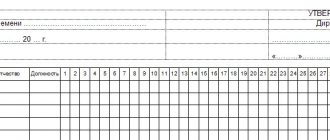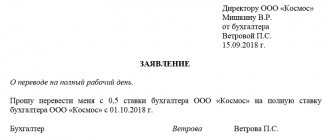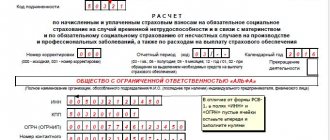Key components of the tariff system of remuneration
The tariff system is the most common payment model. She shares this:
- Time-based tariff system - the actual time worked by a person is taken into account.
- Piece-rate tariff system - it takes into account how much the employee produced (provided services).
The elements of this system include tariff indicators:
- Grid;
- Discharges;
- Odds;
- Rates;
- TKS.
The tariff schedule is a scale that connects categories with coefficients. For example, for state employees, tariffs for 18 categories are applied. The size of the tariff and earnings is influenced by the qualifications and complexity of the work. The calculation base is considered to be the first category rate. It sets the salary for the reporting period.
ETKS - unified tariff and qualification list and EKS - unified directory of administration positions were created for tariff classification and rank division of personnel. They describe what education and experience an employee should have, his knowledge, skills, and nature of work. Today, employers can use professional standards that meet the requirements of the labor market.
Procedure for establishing tariff systems
Russian labor law in its provisions determines the procedure for establishing tariff systems. Regardless of the legal form of the organization and the type of its activity, the tariff payment system is established by local regulations, provisions of collective agreements, and agreements.
Also, when establishing tariff systems, the data of the unified tariff and qualification reference book are fundamentally taken into account, taking into account all the requirements of the labor legislation of the Russian Federation and other regulations mandatory for execution on the territory of the Russian Federation. The employer, when introducing tariff systems to the enterprise, must respect the rights of the employee and create decent working conditions.
How are tariffs set for paying employees?
Personnel performing basic operations are assigned category I. It increases with the growth of the worker’s professionalism.
The tariff rate is fixed by local acts of the organization, regulations, agreements, and collective agreements. The established payment system for work must fully comply with the Labor Code of the Russian Federation, and the established rates must comply with the norms of ETKS, EKS, professional standards, and also not contradict state guarantees.
According to Rostrud Letter No. 1111-6-1 dated April 27, 2011, official bodies recommend establishing equal salaries for positions of the same name in the state.
Work of equal value must be paid equally (Article 22 of the Labor Code of the Russian Federation). Other payments in excess of the tariff: allowances, incentives and others may vary for employees depending on the following points (Article 132 of the Labor Code of the Russian Federation):
- Qualifications;
- Difficulties of activity;
- Amount of labor costs;
- Quality of work.
Employee earnings also increase by the coefficients indicated in the table.
| District groups | coefficient |
| Far North: North-eastern districts Siberia (northern regions) European part (northern regions) | 1,6-2,0 1,4-1,8 1,4-1,5 |
| Areas equated to the regions of the Far North: Far East | 1,4-1,6 1,3-1,4 |
| South of the Far East and Eastern Siberia | 1,2-1,3 |
| European North (except the Far North) | 1,15-1,2 |
| Ural, south Western Siberia | 1,15 |
These coefficients are determined by government bodies by industry and separate areas of organizations.
Example #1. Payroll calculation according to the tariff system of remuneration
Accounting employee M.P. Chernygova earnings are calculated based on the daily tariff rate: 1,200 rubles/day. In addition, she is entitled to a bonus of 2,500 rubles per month. It operates in the Far East with a multiplying factor of 1.5. In August 2021, she worked 18 days out of 22 as scheduled, and was on sick leave for 4 days, the amount of which amounted to 4,054 rubles.
The employee’s earnings for August are equal to: ((1,200*18)+(2,500/22*18))*1.5+4,054=(21,600+2,045.45)*1.5+4,054= 39,522 ,18 rub.
Where is it used and how?
The tariff system of remuneration is very popular in Russia. It is considered quite flexible, which means it can be used in almost every enterprise.
In state-owned companies, the tariff system of remuneration is mandatory. There are special legislative acts that determine tariff rates, schedules, and allowances for civil servants.
A unified tariff schedule exists for the following industries:
- medicine;
- forestry;
- education.
If a budget organization operates in one of these areas, when calculating wages it is guided by the approved tariffs. If the salary is set less than expected, the budgetary institution may be held accountable.
Time-based wage system
Earnings depend on the skill of the employee and the time he works. The system is implemented when labor is not standardized and it is difficult to take into account the number of actions performed by a person. Often time-based payments are used to pay administrative and management personnel (AUP), support and service personnel and part-time workers.
Earnings for simple time work are calculated by multiplying the rate by the time spent on work. If not the entire calculation period has been worked out, the interval actually worked is taken into account.
Salary = Hourly rate x Hours worked
In a similar way, you can calculate wages by day.
The bonus form, in addition to the time spent on work, implies taking into account the quality and quantity of duties performed. Based on this, the employee is entitled to a bonus: a fixed amount or a percentage of the base in accordance with the collective agreement, regulations and order.
Salary = Hourly rate x Hours worked + Bonus
Salary (option No. 2) = (Hourly rate x Volume of hours worked) * Bonus percentage
If the results of work are unsatisfactory, the employer has the right not to issue bonuses to the employee.
Example #2. Payroll calculation according to the temporary wage system
Employee of Mayak LLC, painter N.N. Vasiliev. The tariff rate assigned is 155 rubles/hour. In July of this year, he worked 176 hours (22 days * 8 hours). The organization provides bonuses for employees of this position in the amount of 3,500 rubles. monthly.
Vasiliev’s earnings for July 2021 will be: 155*176+3,500 = 30,780 rubles.
Piece rate form of remuneration
With this form of payment to staff depends on the final result of work, taking into account the quality of services provided or finished products. Such a system gives a person an incentive to increase productivity and ensure good quality of his work.
The amount of earnings is determined at piece rates per unit of production or operation. The transaction is practiced by organizations that can clearly record the quality and volume of goods produced or actions performed.
An organization can make payments for work results individually or collectively, for example, for a team of employees. Depending on the method of calculating wages, the transaction is divided into several types:
- Direct - at fixed prices;
- Premium - bonuses are applied for processing and on other grounds;
- Progressive - prices increase when production exceeds the norm;
- Indirect - earnings directly depend on the result of labor;
- Accord - a deadline and payment are established for the entire volume of work.
Recommendations for improving the tariff system
This form is based on clear rates and takes into account ongoing circumstances. It is ideal for remuneration according to plan: for completing a specific amount of work.
It has some disadvantages. Employees who constantly receive official salaries do not strive to increase the intensity and efficiency of their work, or to make the production process more optimal and rational.
Additional financial compensation for employees is simply necessary. This will stimulate initiative and a creative approach to fulfilling your duties.
By paying raises and bonuses to employees who show the best results, the manager ultimately wins. Production begins to actively develop.
Compliance with several simple rules will have a positive impact on the economy of the organization, in terms of wages at the tariff:
- Arouse workers' interest in the wage system;
- Payment for identical work is equivalent;
- Divide rates not only depending on the skill of the staff, but also on the results, complexity, and intensity of the activity;
- Create interest in replenishing the workforce;
- Provide bonuses and salary increases to highly qualified specialists who show significant results for production;
- Raise prices for work performed above standards.
What documents are used to calculate payroll?
Wages are calculated on the basis of standards, on the one hand, and specific documents in which the employee’s salary is recorded, as well as special conditions for its calculation, on the other hand.
These documents include:
- An employment contract, which fixes the amount of wages, and also sets the time for payment of the advance and main parts.
- An employment order, which, in addition to the amount of wages and other incentive payments, indicates the day on which the employee began performing his job duties.
- Time sheet.
- Documents confirming the completion of work with piecework wages: certificates of completed work, work orders, routes, etc.
- Orders for bonuses or disciplinary action.
- Other internal documents of the organization that influence the formation of wages.
Tariffs in the budget
The wage system in the budget is established by a collective agreement, agreements, and other local acts. They must comply with the laws of the Russian Federation.
Payment in the budget until December 2008 was carried out according to the Unified Tariff Schedule. She acted on the basis of Resolution No. 785 of October 14, 1992.
| Pay grades | 1 | 2 | 3 | 4 | 5 | 6 | 7 | 8 | 9 |
| Tariff coefficients | 1,00 | 1,36 | 1,59 | 1,73 | 1,82 | 2,00 | 2,27 | 2,54 | 2,91 |
continuation:
| Pay grades | 10 | 11 | 12 | 13 | 14 | 15 | 16 | 17 | 18 |
| Tariff coefficients | 3,27 | 3,68 | 4,18 | 4,73 | 5,32 | 6,00 | 6,68 | 7,41 | 8,23 |
Each employee, according to the UTS, has his own pay ratio.
The salary (tariff) of the first category must be equal to or exceed the minimum wage (see → table of minimum wages by year). The maximum size of this indicator is unlimited and depends solely on the employer’s finances.
The rates for personnel of the highest ranks are equal to the product of the level 1 rate and the skill coefficient.
Now work is paid in a new way (NSOT), this is enshrined in Resolution No. 583 of 08/05/2008. The principle of payment to public sector employees is based on data from the ETKS and EKS, state guarantees, lists of additional payments and incentives.
The size of the rates is determined in a new way by the manager, taking into account the skill of the employee, the complexity and significance of his work. The amount of earnings excluding additional payments under the NSOT should not be lower than the indicators established in the UTS for similar work.
According to the recommendations of the Russian Federation Commission dated December 25, 2015, employees of identical professional levels and positions should earn the same.
Additional payments in the tariff system
Additional payments are used to compensate the employee for any losses in salary caused by reasons beyond his control. Bonuses encourage workers to improve their professional qualities and skills.
Some above-tariff payments are fixed in the internal documents of the organization, while others are mandatory and guaranteed by law. For example, payments for an academic degree, northern payments, for movement along a mine shaft, etc. Additional payments can be established by agreement of the parties and enshrined in the employment agreement.
Additional payments can be divided as follows:
| Payment groups | Special nature of the work | Special working conditions |
| Types of surcharges and allowances | Weekends and holidays | Dangerous and harmful conditions |
| Shift work | Intensity of work on the conveyor | |
| Overtime work | Combination of professions, substitution | |
| Dividing a work shift into parts | Night work |
According to Art. 191 of the Labor Code of the Russian Federation, the employer has the right to independently establish the types of incentives for employees for the successes they have achieved. Additional payments are fixed in the collective agreement, charter, and regulations on discipline. Allowances for work are stimulating and depend on the business qualities of a particular employee.
TARIFF SYSTEM AND ITS ELEMENTS
Each worker receives a salary for his work.
Based on Art. 135 of the Labor Code of the Russian Federation (hereinafter referred to as the Labor Code of the Russian Federation), wages are established for the employee by an employment contract in accordance with the remuneration systems in force in the organization. It is possible to differentiate wages using a tariff system of remuneration, when remuneration for work depends on the qualifications of the employee, the complexity, quantity and quality of the work he performs. According to Art. 143 of the Labor Code of the Russian Federation, the tariff system of remuneration includes :
- tariff rates;
- salaries (official salaries);
- tariff schedule;
- tariff coefficients.
The main element of the tariff system of remuneration is tariff rates.
Tariff rate is a fixed amount of remuneration for an employee for fulfilling a standard of work of a certain complexity (qualification) per unit of time (hour, day, month) without taking into account compensation, incentives and social payments. The tariff rate of the first category determines the minimum wage for unskilled labor per unit of time.
Tariff schedule is a set of tariff categories of work (professions, positions), determined depending on the complexity of the work and the requirements for the qualifications of workers using tariff coefficients. The tariff schedule is a scale of ratios in the remuneration of workers of various qualifications.
The tariff category reflects the complexity of the work and the level of qualification of the employee, and the qualification category characterizes the level of his professional training. Typically, the first rank is assigned to the least qualified positions, and as the level of complexity of the job increases, the rank also increases.
The tariff coefficient establishes the ratio of the tariff rate of a given category to the tariff rate of the first category. The tariff coefficient shows how many times the rate of any of the categories of the grid is higher than the rate of the first category, the coefficient of which is always equal to one. The ratio of tariff coefficients of the extreme ranks is the range of the tariff schedule . Today, the most common are six- and eight-digit tariff scales with a range of two.
NOTE
The remuneration system, tariff rates, salaries, bonuses, and other incentive payments are determined independently by organizations in collective agreements and internal local acts (provisions on bonuses, provisions on remuneration, etc.). Different organizations may establish different tariff scales, differing, for example, in the number of categories.
Commercial organizations do not have mandatory tariff schedules introduced at the legislative level. They can develop their own tariff schedule. A private employer has the right to independently determine the number of categories in the company’s tariff schedule, the size of tariffs and coefficients.
When developing wage scales, the following must be taken into account: no one should receive a salary lower than the current minimum wage (minimum wage), and the maximum wage is not limited.
FOR YOUR INFORMATION
From July 1, 2016, the minimum wage in the Russian Federation is set at 7,500 rubles . (Article 1 of the Federal Law of June 2, 2016 No. 164-FZ “On Amendments to Article 1 of the Federal Law “On the Minimum Wage””).









